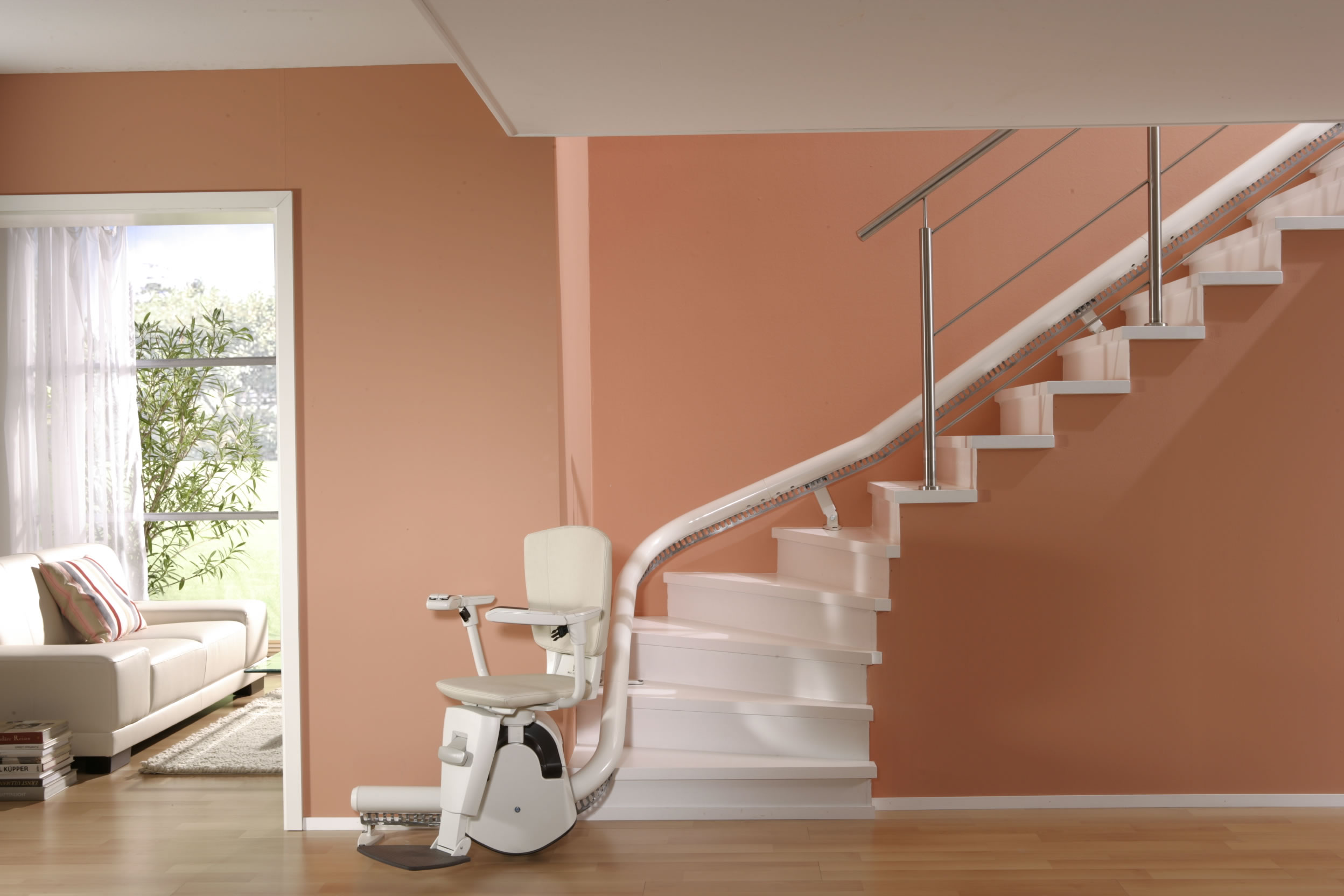5 Things to Consider When Deciding on a Home Stairlift
 According to the American Enterprise Institute (AEI), the average home has increased in size by more than 1,000 square feet in the last four decades. In many cases, this increase in square footage has resulted not just in longer, wider homes, but taller homes as well.
According to the American Enterprise Institute (AEI), the average home has increased in size by more than 1,000 square feet in the last four decades. In many cases, this increase in square footage has resulted not just in longer, wider homes, but taller homes as well.
But for a population that is looking forward to a longer lifespan than ever before, homes with multiple stories can begin to present mobility issues later in life. If you fall into this category, you may be contemplating installing a home stairlift. Here are five helpful tips to consider before you make your purchase decision.
Tip 1: Match the right lift to your staircase.
For most homes, the central staircase connecting the levels is either straight or curved. It is important to know here that if your staircase looks straight but stops periodically to incorporate a bend or a landing space, it may technically be classified as a curved staircase.
According to Handicare, because the costs can vary rather noticeably between the two options (up to $5,000 or more for design and installation), knowing what type of staircase you have will help you find the best option for your budget.
Tip 2: There are four main types of home stairlifts.
Just as different people may have different mobility issues, so too are there different types of home stairlifts to accommodate these. The major types are as follows:
- Straight stairlift. The straight stairlift is designed to be installed on a straight indoor staircase.
- Curved stairlift. The curved stairlift is designed to be installed on a curved indoor staircase.
- Standing stairlift. The standing (or perch) stairlift allows the user to just walk in without having to sit, which can be critical for those who have knee issues that make sitting or bending difficult.
- Outdoor stairlift. Most outdoor stairlifts are weatherproofed and designed to be installed on an outdoor staircase.
Tip 3: Today’s home stairlifts offer many custom modifications.
Because people come in all shapes and sizes, so do stairlifts. For instance, you can ask for a modification to raise the seat to accommodate a tall user. For heavier individuals, there are stairlifts with a greater lift capacity and more interior room.
But the modification options don’t stop there. You can also choose to include many options like these:
- Swivel seats.
- Armrests and footrests.
- Braking capacity.
- Armchair controls.
- Call send options.
Tip 4: You have two power source options.
Most stairlift manufacturers today will offer two different power source options for operating your home stairlift. Your options include:
– Battery power. In addition to quieter operation and (in some stairlifts) the ability to charge at the top, bottom or in mid-staircase, a battery powered stairlift will still work even if the power goes out in your home for any reason.
– Electric power. Electric power home stairlifts are more limited in that they will not work when the power is out, but they can be a more economical option.
Tip 5: You can rent or own your home stairlift.
Many distributors today offer the option to either rent or buy the home stairlift you want to install. As well, financing is often available if you do want to buy the home stairlift outright.
You may also have luck with shopping for refurbished home stairlifts in your area. Most dealers that offer refurbished stairlifts still have some kind of warranty, so it is often better to buy from a dealer than from an individual.
Once you have narrowed down your list to the home stairlifts you are most interested in, ask the dealer or manufacturer where you can go to try them out in person. It is always best to actually see the stairlift in action and use it yourself before you make that final purchase or rental decision. As well, it is always a good idea to research the brand and model on your own (apart from any testimonials on the brand website) to verify the stairlift quality.

















